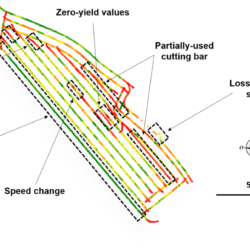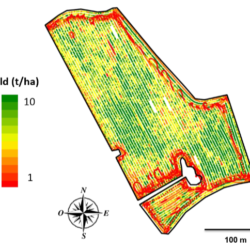Filtering – Cleaning Yield Maps
In the previous post, a fairly general picture of yield sensors and associated data was drawn. Here we return to a recurring question related to yield data: How can we ensure that yield data are reliable enough to be used properly? We will therefore review the main sources of uncertainty in these data sets; and Read more about Filtering – Cleaning Yield Maps[…]









